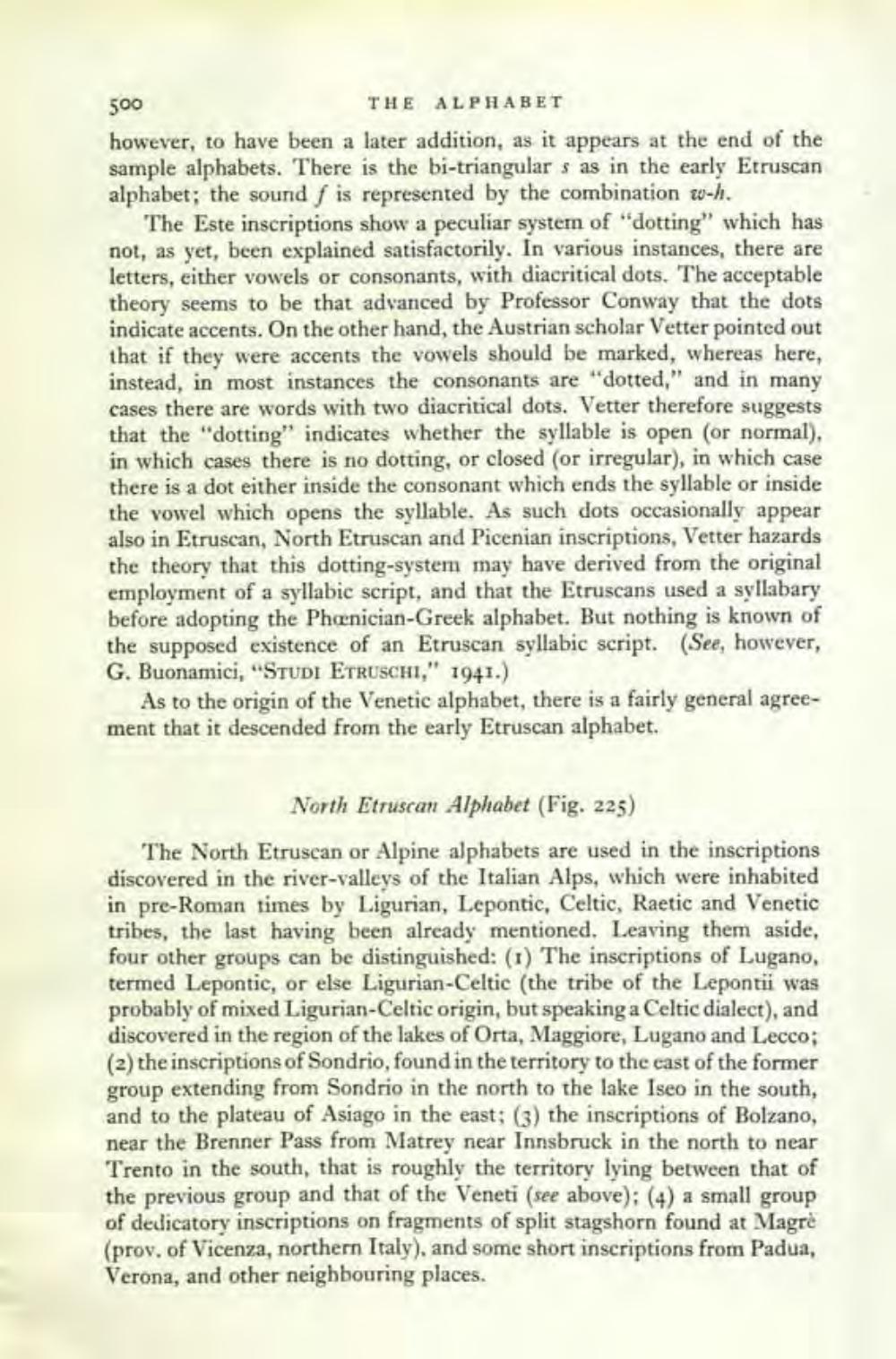________________
500
THE ALPHABET however, to have been a later addition, as it appears at the end of the sample alphabets. There is the bi-triangular s as in the early Etruscan alphabet; the sound f is represented by the combination w-h.
The Este inscriptions show a peculiar system of "dotting" which has not, as yet, been explained satisfactorily. In various instances, there are letters, either vowels or consonants, with diacritical dots. The acceptable theory seems to be that advanced by Professor Conway that the dots indicate accents. On the other hand, the Austrian scholar Vetter pointed out that if they were accents the vowels should be marked, whereas here. instead, in most instances the consonants are "dotted," and in many cases there are words with two diacritical dots. Vetter therefore suggests that the "dotting" indicates whether the syllable is open (or normal), in which cases there is no dotting, or closed (or irregular), in which case there is a dot either inside the consonant which ends the syllable or inside the vowel which opens the syllable. As such dots occasionally appear also in Etruscan, North Etruscan and Picenian inscriptions, Vetter hazards the theory that this dotting-system may have derived from the original employment of a syllabic script, and that the Etruscans used a syllabary before adopting the Phænician-Greek alphabet. But nothing is known of the supposed existence of an Etruscan syllabic script. (See, however, G. Buonamici, "STUDI ETRUSCHI," 1941.)
As to the origin of the Venetic alphabet, there is a fairly general agreement that it descended from the early Etruscan alphabet.
North Etruscan Alphabet (Fig. 225)
The North Etruscan or Alpine alphabets are used in the inscriptions discovered in the river-valleys of the Italian Alps, which were inhabited in pre-Roman times by Ligurian, Lepontic, Celtic, Raetic and Venetic tribes, the last having been already mentioned. Leaving them aside, four other groups can be distinguished: (1) The inscriptions of Lugano, termed Lepontic, or else Ligurian-Celtic (the tribe of the Lepontii was probably of mixed Ligurian-Celtic origin, but speaking a Celtic dialect), and discovered in the region of the lakes of Orta, Maggiore, Lugano and Lecco; (2) the inscriptions of Sondrio, found in the territory to the cast of the former group extending from Sondrio in the north to the lake Iseo in the south, and to the plateau of Asiago in the east; (3) the inscriptions of Bolzano, near the Brenner Pass from Matrey near Innsbruck in the north to near Trento in the south, that is roughly the territory lying between that of the previous group and that of the Veneti (see above): (4) a small group of dedicatory inscriptions on fragments of split stagshorn found at Magre (prov. of Vicenza, northern Italy), and some short inscriptions from Padua, Verona, and other neighbouring places.




